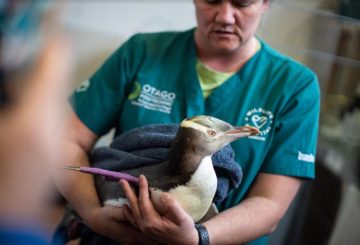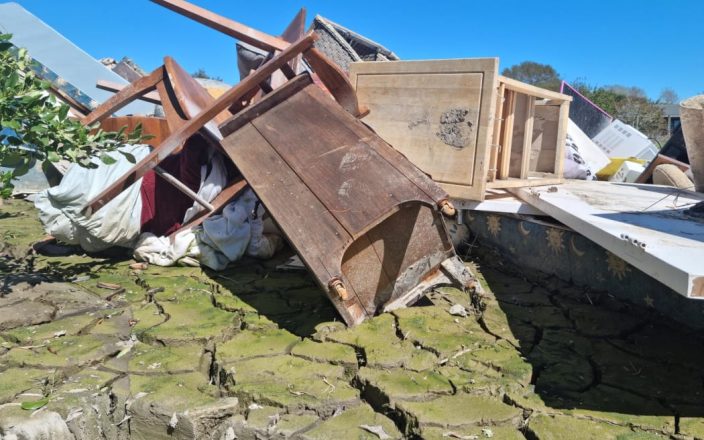Ang pagsubok ni Philip Polkinghorne ay pumasok sa ikalawang linggo nito, nagsisimula sa isang forensik na siyentipiko na naglalarawan ng kanyang trabaho sa kanyang tahanan. Si Polkinghorne, isang 71 taong-gulang na doktor sa mata, ay tumawag sa mga serbisyong pang-emergency na sinasabing pinatay ng kanyang asawa na si Hanna ang kanyang sarili. Inamin niya na nagkakaroon ng methamphetamine at isang pipe ngunit tinanggihan ang pagpatay sa kanya. Natagpuan si Hanna na patay noong Abril 5, 2021, sa kanilang tahanan.
Sinasabi ng paniniwala na si Polkinghorne ay nagdulot ng dobleng buhay, nahuhumaling sa sex at droga, at nagtalo na pinatay niya si Hanna, na nagtatanghal ng eksena na parang pagpapakamatay. Nagtatalo ng pagtatanggol ni Polkinghorne na si Hanna ay may mga isyu sa kalusugan ng kaisipan at kinuha ang kanyang sariling buhay dahil sa pagkapagod mula sa trabaho.
Nagpatotoo ang forensik na siyentipikong si Fiona Matheson tungkol sa kanyang trabaho sa bahay. Nag-aalala ng pulisya na maaaring maging kahina-hinala ang eksena nang dumating siya. Gumugol siya ng isang linggo sa pagsubok para sa dugo at DNA at bumalik kalaunan para sa mga pagpupulong sa pulisya. Sa panahon ng kanyang patotoo, inamin niya na hindi pangkaraniwan na gumugol ng napakaraming oras sa isang eksena ng tirahan.
Sinubukan ni Matheson ang kwarto ni Hanna, kung saan inaangkin ni Polkinghorne na natulog siya noong gabi bago siya kamatayan. Nakolekta niya ang mga sample mula sa mga bote ng tsaa at tubig, na isinasaalang-alang ang posibilidad na maaaring naidrog si Hanna. Gayunpaman, ang mga resulta ng toxicology ay hindi nagpakita ng pag-aalala na siya ay nai-droga.
Nakilala ang isang mantsa ng dugo sa kama, na kalaunan ay ihahayag bilang ni Polkinghorne, ngunit hindi matukoy ni Matheson kung gaano katanda ito. Wala siyang nakita ng ibang dugo sa silid-tulugan, kahit na may espesyal na pagsubok.
Sinabi ng paglilitis na ang kwarto ay nasa kaguluhan, na nagmumungkahi ng posibleng marahas na insidente sa pagitan ng mag-asawa. Tinanong ng pagtatanggol si Matheson tungkol sa banyo sa en suite, kung saan natagpuan ang mga bakas ng methamphetamine. Walang dugo ang natuklasan sa master bedroom, kung saan inaangkin ni Polkinghorne na natulog siya bago hanapin si Hanna.
Sa panahon ng pagsubok sa master bedroom, natagpuan ni Matheson ang isang walang laman na bag na dati nang may hawak ng methh. Ang paglilitis ay inaasahang magtatagal ng hindi bababa sa anim na linggo, na pinangangasiwaan ni Justice Graham Lang at isang hurio.




























































